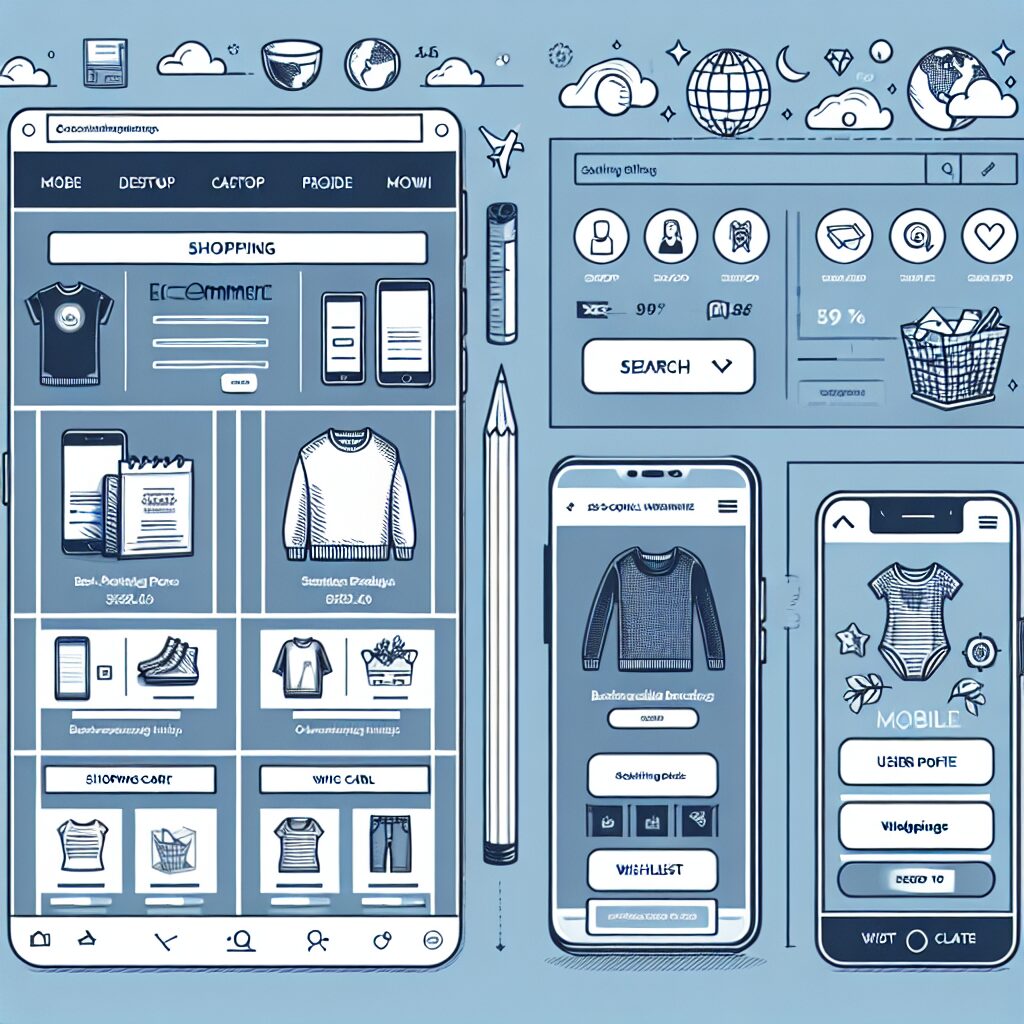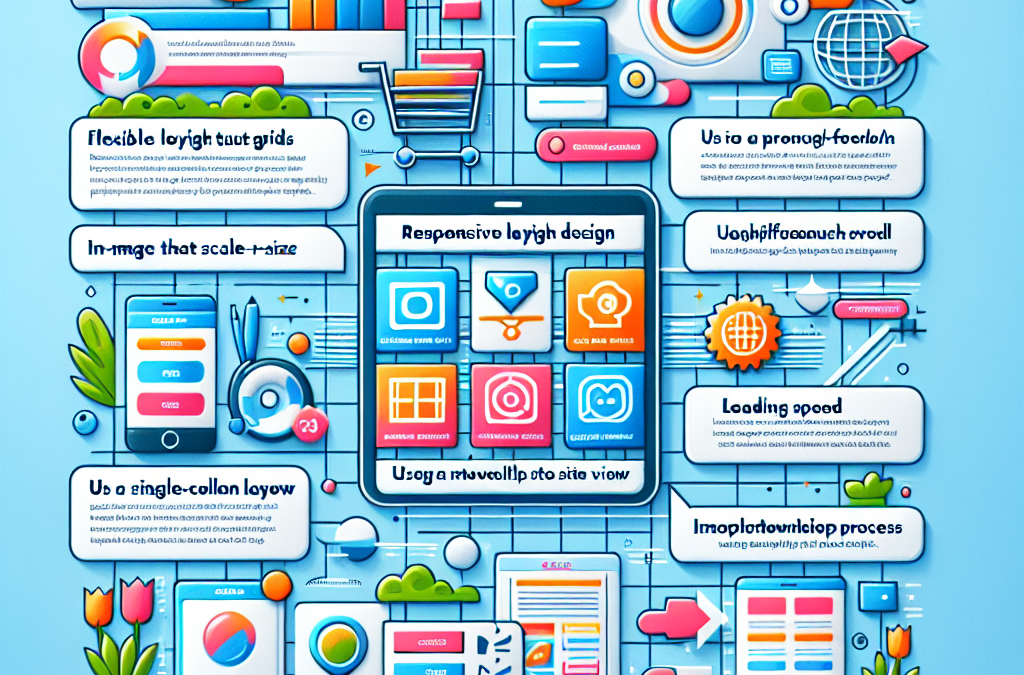Top 5 Responsive Design Tips for E-commerce Sites
Introduction
In this article, we will explore Responsive Design Tips for E-commerce Sites. Responsive design is crucial for e-commerce because most people shop on their phones. With mobile shopping growing every day, having a website that looks great on all devices is necessary. Recent studies show that a responsive design can increase sales by making shopping easier for customers.
We will discuss the basics of responsive design and how to use it for e-commerce success. You will learn tips for creating a mobile-friendly site that improves customer experience. Let’s get started with some fun facts about mobile shopping! Did you know that over half of all online shopping is done on mobile devices? That’s a huge number! So, how can we make our sites better for these shoppers?
What is Responsive Design?
Definition
Responsive design is a way to make websites work well on different devices. This means that whether someone is using a phone, tablet, or computer, the site will look good and be easy to use.
Historical Context
Web design has changed a lot over the years. In the past, websites had fixed layouts. They looked the same on every device. Then, responsive design came along. This change started when CSS3 was introduced. CSS3 allowed designers to create flexible layouts. Later, tools like Bootstrap made it easier for everyone to create responsive sites.
The Importance of Responsive Design
Today, responsive design is more important than ever. Here are some reasons why:
- Mobile usage is rising: More and more people use their phones to shop online.
- Search engines like Google prefer mobile-friendly sites: If your site isn’t responsive, it might not show up as high in search results.
- Better user experience leads to more sales: Customers are happier when they can easily browse and shop.
Responsive Design in the Context of E-commerce
Responsive design directly impacts e-commerce success. Here’s how:
- Improved user experience: Customers can find what they want quickly.
- Higher conversion rates: A good design can lead to more purchases.
- Examples of successful sites: Look at Amazon or eBay. They use responsive design to make shopping easy.
Key Players or Contributors
Many companies and people help shape responsive design. Some tools that make it easier include:
- Adobe XD: Great for designing and prototyping.
- Figma: A collaborative design tool that helps teams work together.
These tools have made it easier for designers to create responsive websites.

Top 5 Responsive Design Tips for E-commerce Sites
Tip 1: Prioritize Mobile-First Design
Starting with mobile design helps ensure your site works well on phones. Here’s how to do this:
- Design for the smallest screen first: This forces you to focus on essential features.
- Scale up for larger screens: Once mobile is perfect, make adjustments for tablets and desktops.
Tip 2: Use Flexible Grids and Layouts
Flexible grids adjust to different screen sizes. Here’s how to make them:
- Use percentages instead of fixed pixels: This allows elements to grow and shrink.
- Utilize CSS Grid or Flexbox: These tools help create responsive layouts easily.
Tip 3: Optimize Images
Images can slow down your site if they’re too large. Here’s how to optimize them:
- Use the right file format: JPEG is great for photos, while PNG is good for graphics.
- Compress images: Tools like TinyPNG can help reduce file size without losing quality.
Tip 4: Ensure Text Is Readable
Text needs to be easy to read on all devices. Here’s what to do:
- Choose a legible font: Sans-serif fonts are usually easier to read on screens.
- Adjust font size: Make sure text is large enough for mobile users.
Tip 5: Test Your Design Regularly
Regular testing helps catch issues early. Here’s how to do it:
- Use tools like Google’s Mobile-Friendly Test: This shows how your site performs on mobile.
- Get feedback from users: Ask friends or family to try your site on different devices.
Conclusion
Responsive design is vital for e-commerce success. We covered the basics of responsive design and five tips to improve your site. Remember to prioritize mobile-first design, use flexible grids, optimize images, ensure readability, and test regularly. These steps will help create a better shopping experience and can lead to increased sales.
FAQs
- What is responsive design?
- Responsive design makes websites look good on all devices.
- Why is responsive design important for e-commerce?
- It improves user experience and can increase sales.
- How can I start a mobile-first design?
- Begin by designing for the smallest screens and then scale up.
- What tools can help with responsive design?
- Tools like Adobe XD and Figma are great for design.
- How do I optimize images for my site?
- Use the right file format and compress images to reduce size.
- What kind of fonts work best for mobile?
- Sans-serif fonts are usually easier to read on screens.
- How can I test my site’s responsiveness?
- Use tools like Google’s Mobile-Friendly Test and get feedback from users.
- What layouts are best for responsive design?
- Flexible grids and layouts using CSS Grid or Flexbox are effective.
- How does responsive design affect SEO?
- Search engines prefer mobile-friendly sites, which can help improve rankings.
- Can I use responsive design for an existing site?
- Yes, you can update your current site to be responsive by adjusting layouts and images.
Resource Links:
- reddit.com: … Register your business and obtain necessary permits and licenses. Choose a business structure. Choose a web hosting service and create a website …
- constantcontact.com: … 1. Keep it mobile-responsive · 2. Put your top products front-and-center · 3. Use a pop-up sign-up sheet · 4. Remember SEO best practices · 5. Use …
- reddit.com: … … web site built for it. You may pick up some coding skills in whatever framework you end up using (eg a little PHP will help you with using …

